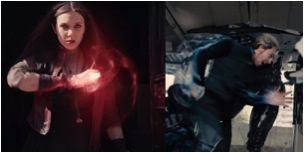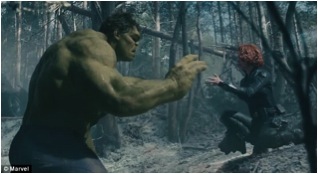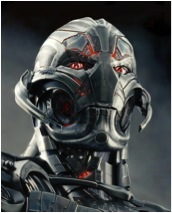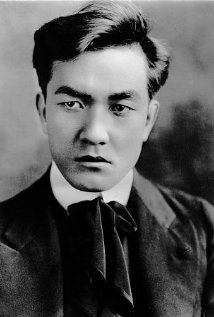Bruce Lee was the original. When Enter The Dragon was released in the United States in 1973, Lee, who had died just weeks before, was the exception to Hollywood’s overwhelming refusal to cast Asian men in leading roles. When I published my historical analysis on Hollywood’s treatment of the Asian male, I did not expect the discussion here at Hooded Utilitarian to be dominated by a man about whom I’d said less than ten words. I had described Hollywood’s tendency to typecast Asian males into extremely limited roles, including socially awkward nerds or asexual warrior types, a la the Bruce Lee kung fu movie.
I’d underestimated the power of the Bruce Lee Effect. Bruce Lee wasn’t merely typecast; he originated the type, commanding roles for himself when Hollywood would offer him none. My analysis, however, had been focused on the first of the two adjectives – asexual. Hollywood had, and largely still has, a reluctance to portray Asian male sexuality that borders on the ludicrous, given that it practically extracts it from everyone else. In that article, I had been focused on Bruce Lee as a character and the type role begun in Hollywood because of him. From the perspective of film analysis, I maintain that Lee did not succeed in overturning the trope of asexual Asian male.
The intensity of his legacy has made such critical distance difficult. The conflation and elevation of the character and the man in our collective cultural memory has in turn engendered Bruce Lee the Icon – a third being, with his own characteristics and place in our conversations. When Bruce Lee is mentioned, it is generally the Icon to whom we are appealing.

I have a hell of a responsibility because Americans do not have first-hand information on the Chinese. Enter the Dragon should make it – this is the movie that I’m proud of – Bruce Lee
The characters in Lee’s martial arts films were designed to show off his kung fu and jeet kune do fighting skills. The first three, The Big Boss, Fist of Fury, and The Way of the Dragon, were Hong Kong kung fu films and as such were not subject to Hollywood’s prejudice against Asian men (at least, not Chinese men). Even in these films, however, displays of sexuality are mild and secondary.
In The Big Boss (1971, later released in the U.S. as Fists of Fury), Lee plays Cheng Chao-an, a Chinese man who moves to Thailand to work with his cousins in an ice factory. His cousin Qiao Mei (Maria Yi) is a typical damsel in distress who must be rescued by Cheng. While nothing overtly sexual ever happens onscreen between Cheng and Qiao, at one point a drunk and unconscious Cheng is taken explicit advantage of by a prostitute, who Cheng, in his drunken state, mistakes for Qiao. In Lee’s second Hong Kong film, Fist of Fury (1971, also released as The Chinese Connection), Lee’s character Chen Zhen shares a brief moment of onscreen passion with his fiancé (Nora Miao). Notably, however, the fiancé character is not named and is allowed little development beyond that of devoted helpmeet to Chen.

Lee and Chuck Norris in “The Way of the Dragon”
Perhaps the best Bruce Lee film, the 1972 comedy The Way of the Dragon (also released as Return of the Dragon) was produced for Lee’s own production studio and designed specifically to showcase his own jeet kune do fighting style, with little of the knives and gore prevalent in the previous two. In this film, which Lee also wrote and directed, Lee’s character Tang Lung travels to Rome to help defend Chen Ching-hua’s restaurant business from a mob boss. Although Chen (Nora Miao) appears to be falling for the handsome and proficient fighter, she is rebuffed by Tang’s oblivious insistence on an early bedtime and other innocent deflections. At another point, Tang is approached by a beautiful Italian woman and follows her to her apartment, but he runs from her exposed body in outright fear (Lee’s comedic acting skills are truly under-appreciated).
In Enter the Dragon (1973), Lee’s first and only Hollywood feature, Bruce plays a Shaolin warrior named Lee who is tapped by the British Intelligence to bring Han, a nefarious fallen Shaolin, to justice. The warrior’s task is to accept an invitation to a competition on Han’s (strictly firearm-less) isolated island and defeat the evil Han.

Lee in “Enter the Dragon”
The film was the first of its kind for Hollywood – but it is not a display of the Lee character’s sexuality, and not because there is no logical outlet in the plot. When the competitors arrive on the island, each man is offered his choice of slave girl to keep him company for the evening. Williams (Jim Kelly) crudely selects four or five. Roper (John Saxon) chooses a romantic interest. Lee requests Mei Ling (Betty Chung), knowing she is also an agent working for the British Intelligence, and the two exchange information in his room as colleagues. When the film premiered in Hong Kong, where crude sexual objectification was the norm, the scene brought hoots of laughter from the crowd, mocking Lee for his chaste choice in partner.
Bruce Lee certainly displays charisma – as an actor, he was handsome and magnetic – but never is the character’s ability to seduce or be seduced an aspect of the plot line. The Lee character remains impressively stoic and single-minded, motivated by vengeance for his murdered sister and sympathy for the victims of Mr. Han’s sexual violence.
In the majority of the Lee roles, and certainly in his one Hollywood role, overt displays of sexuality are limited to the Lee character inevitably disrobing in preparation for a fight. Perhaps there are select circles in which the cinematic animal cries (not normally a part of Lee’s efficient fighting style) accompanying scenes of Lee beating another man to death do get viewers hot and heavy. I understand that an admiration of the male form can be garnered from such scenes, however, I reject the argument that a display of ruthless power equates to an expression of male sexuality. In any case, this type of sexuality resides within the audience’s perception, rather than in the way in which the character is written.
If our goal is the undoing of the Hollywood Asian castration, then the Lee character cannot stand alone. And that’s all right – Enter The Dragon is quite possibly the better film for it. Lee is a powerful and morally upright character; Mei Ling gets to be a kick-ass agent without turning into anyone’s fantasy. Not every good role need be an overt demonstration of sexuality. Lee the character in his films, particularly Enter The Dragon and The Way of the Dragon, can be masculine, heroic, merciful and redemptive without being a conspicuously sexual being.

The only ‘curse’ hanging over Bruce Lee is that he will forever be associated either with fantasized accounts of his life, or with videos titled The Curse or The Myth. The reality of his life is far more remarkable – Bruce Thomas (pg 254)
Bruce Lee the man was much more than his film roles. Lee Jun Fan, nicknamed “Bruce” by the attending physician at his birth, was born on November 27, 1940 in San Francisco. His father, a Hong Kong opera singer, was on tour in the United States. His parents returned to Hong Kong when Bruce was a few months old, where Bruce led a relatively privileged childhood. He began his acting career as an infant in San Francisco, when he appeared briefly as an extra in the movie Golden Gate Girl. By the age of six, he had a costarring role in My Son, Ah Cheung and ultimately appeared in twenty pictures as a child actor, usually in roles such as street urchins, juvenile delinquents, and rebels that occasionally made use of his fighting skills.

Linda, Bruce, and Brandon
His privileged background and acting career, however, did not prevent him from running the streets with the rest of the Hong Kong youth, even forming his own gang (the Tigers). He began studying wing chung, a form of kung fu, at the age of fifteen and began to practice on the streets of Hong Kong, until his parents suggested that he claim his citizenship birthright and continue his education in the United States.
Bruce moved to San Francisco at the age of eighteen to work at the restaurant of a family friend, eventually relocating to Seattle to attend college at the University of Washington and open his own kung fu school. One of his first students was a freshman named Linda Emery. In 1964 they were married, and eventually moved to Oakland, California where Bruce opened up the Jun Fan Gung Fu Institute and continued to develop his unique style of fighting. The Lees’ first child Brandon was born in 1965, followed by Shannon in 1969.
Lee was one of the most exceptionally talented fighters the world has even known. He attracted and taught the most successful martial artists in the United States at the time, including Jhoon Rhee (father of American Taekwondo), Hayward Nishioka (1967 Pan American Judo Gold Medalist), and karate champions Chuck Norris, Joe Lewis, and Bob Wall. Lee found the specificity of any one style of fighting too restricting and inefficient. He incorporated elements from different martial arts and Western-style boxing and fencing, eventually developing a style known as jeet kune do. Calling his method the “style of no style,” it was initially Lee’s goal to start a chain of schools across the nation – but he could not ignore the pull of his acting roots.

Lee as Kato
In 1966, Lee was cast in The Green Hornet as Kato, the Hornet’s sidekick and chauffeur. Although the series was largely a dud and lasted only one season, Lee himself was a success, especially in Hong Kong, where The Green Hornet was known as The Kato Show. Unfortunately, his popularity as Kato did not translate to more roles for Lee, and he resumed teaching, occasionally finding work choreographing fight scenes for movies and television shows. For a while, he worked with Warner Brothers and the ABC Network to develop a martial arts western drama for television, in which he expected to star as a Shaolin monk who wanders about the American West using his knowledge of kung fu in various escapades. When the show was produced in 1972, renamed Kung Fu, the role intended for Lee went to the very-white David Carradine.
Unable to find the type of work he longed to do in America, Lee was eventually contracted by Golden Harvest in Hong Kong. Under producer Raymond Chow, Lee made two Hong Kong kung fu movies: The Big Boss and Fist of Fury. Lee quickly became a national hero in Hong Kong, becoming so wildly popular that he could not go anywhere without being recognized and mobbed. Hoping to make higher quality films, Lee teamed up with Chow to start their own company, Concord Productions, for which they made Way of the Dragon (which Lee also wrote, directed, and produced) and began filming a work, to be titled Game of Death.

Lee and son Brandon
While filming Game of Death, Lee got the offer he’d been waiting for: the lead in a film to be produced by Warner Brothers. At this time in Hollywood’s history (and indeed, perhaps even today) for an Asian man to be cast as lead in a major motion picture, he would have to have been absolutely extraordinary. Bruce Lee was that extraordinary man: by the time Warner Brothers contracted Lee for Enter the Dragon, Bruce Thomas claims that he was possibly the most highly paid actor in the world.
While the characters Lee portrayed may not have given Hollywood a sexual hero, it is impossible to deny the appeal of the man himself. He was exceptionally handsome and terribly confident. He had a habit of removing his shirt so others could admire him and would encourage women to feel his muscles. No words suffice to describe the gravity possessed by Lee in recordings of his few surviving interviews. In his biography on Lee, Bruce Thomas records Joe Lewis remembering that “Bruce had a charm that didn’t come across on the screen. I guess you could use the word ‘magic’…there’s a spark of enthusiasm in everyone’s mind. Bruce used to ignite that spark.”
On July 20, 1973, shortly after completing Enter the Dragon, Lee died of a brain edema, an apparent reaction to one of the compounds in the drug Equagesic, an aspirin, which he had taken for a headache. Enter the Dragon was subsequently released in the United States on July 26, propelling Lee to instant fame. By the time he achieved his dream of Hollywood stardom, he was already gone.

Dragon: The Bruce Lee Story is a “fictional version of a nonfiction story – neither a true story nor a documentary – Rob Cohen, director, Dragon
The iconography of an artist is a marriage in the public consciousness of our memory of the man and his creations. Lee was introduced to an American audience after he had already passed, catalyzing his reduction to the status of American icon.
Lee’s work as an actor is limited by his early death, disjointed by the multiplicity of film industries in which he worked and adulterated by the existence of films released posthumously. At the time of his death, Lee had completed about twenty minutes of Game of Death (1978), which was later padded with awkward stand-ins and choppy cuts to surviving footage of Lee, incurring significant changes to the original plot. Game of Death even notoriously exploited footage of Lee’s actual corpse and funeral.
Similarly, the Bruce Lee biographical material is depressingly incomplete and discordant. The result is a mix of the biographical and the apocryphal: personal memoirs, photo collections, mini documentaries, hagiographies, and film commentaries, mostly out of date and out of print.
The Fred Weintraub documentary, Bruce Lee: The Curse of the Dragon, narrated by George Takei, consists primarily of nostalgic interviews with Lee’s family and friends but also takes pains to exploit the apparent connection to the death of his son, Brandon, in 1993. Davis Miller, a martial artist and Bruce Lee aficionado contracted by Weintraub to write the original script, complains in his personal memoir that “although I received sole screen credit for Fred’s show, hardly a word I wrote was used in the film.” Such incongruities between sources make fact-checking even some of the most basic details of Lee’s life frustratingly difficult. Bruce Lee, it would seem, is open to interpretation.
Out of the hodge-podge of facts and fiction the Icon rises like a phoenix. It is this third being, begotten of memory and film reel, with whom most Americans are familiar. The natural consummation of Bruce Lee the Icon was of course Bruce Lee the Character in a movie about the life of Bruce Lee the Man. Dragon: The Bruce Lee Story (1993), starring Jason Scott Lee (no relation), turns the life of Bruce Lee into a Bruce Lee kung fu movie, in which Lee the Icon faces off against racism, inner demons, and other metaphysical concepts in a serious of very physical fight sequences. To say that the film plays fast and loose with the details of Lee’s life is an understatement.

Jason Scott Lee in “Dragon”
Bruce Lee’s films, especially Enter The Dragon, were groundbreaking. Lee wanted to set the standard for the kung fu film in the West, and this he most undoubtedly accomplished. As a result of his genius, Hollywood was opened a crack for Asian male actors. However, the role of stoic warrior-hero became one of the only acceptable roles for East Asian males in Hollywood. Hollywood has since humored many martial artist-actors including Jet Li, Donnie Yen, and Jackie Chan, and these successors owe the clear path forged for them to Lee. However, the warrior role continues to be one of the only images with which mainstream American media is comfortable, and the role is generally de-sexualized.
Bruce Lee the Icon is that powerful force that ripped through the fabric of Hollywood and tore apart the usual pattern. It is the Icon who has slipped into our imaginations – Bruce Lee the man simply never had the chance.
___________
Em Liu is a fiction enthusiast particularly interested in depictions of women and minorities onscreen. She blogs over at FictionDiversity.com, and you can follow her on Twitter at @OLiu1230.














